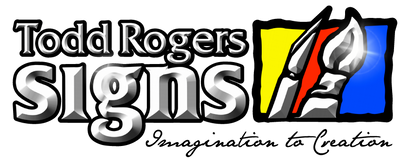🔍 Signage Secret #3: What Makes Signage Accessible (And What Doesn’t)
A great sign doesn’t just look good—it works for everyone. Accessibility in signage isn’t a buzzword or a box to tick. It’s about making sure your message reaches as many people as possible, regardless of age, ability, or environment.
At Todd Rogers Signs, we believe good design is inclusive design. Whether it’s a shopfront, a directional sign, or a safety notice, accessibility should be baked into every decision—from font choice to placement.
Let’s break down what makes signage truly accessible—and what gets in the way.
👓 Clear Fonts = Clear Communication
Fancy fonts might look stylish, but they’re often hard to read—especially for people with low vision or dyslexia. Script fonts, thin lines, and decorative lettering can slow down recognition and cause confusion.
We recommend:
- Sans-serif fonts with clean edges
- Bold weights for better visibility
- Consistent spacing between letters and lines
💡 Todd Tip: If you have to squint or tilt your head to read it, it’s not accessible. Choose clarity over flair.
🎨 Contrast Is Key
We covered this in a previous post, but it’s worth repeating: contrast matters. High contrast between text and background helps everyone read your sign—especially in low-light conditions or from a distance.
Avoid:
- Light grey on white
- Yellow on pale blue
- Red on black (surprisingly hard to read)
Instead, go for combinations like:
- White on navy
- Black on yellow
- Dark green on white
Contrast isn’t just a design choice—it’s a visibility tool.
🧭 Placement That Works
Where you put your sign matters just as much as what’s on it. Signs should be placed at eye level, in well-lit areas, and free from obstructions.
For public spaces, consider:
- Tactile elements like raised lettering or braille
- Consistent positioning so users know where to look
- Non-reflective surfaces to reduce glare
💡 Todd Tip: Walk past your sign like a customer would. If it’s hard to spot or read, it’s time to rethink the placement.
💬 Final Word
Accessible signage isn’t just about compliance—it’s about connection. It shows your customers, clients, and community that you care about their experience. And in a world where attention is fleeting, clarity is everything.
At Todd Rogers Signs, we design signs that speak to everyone. Because your message deserves to be heard—loud, clear, and inclusive.



